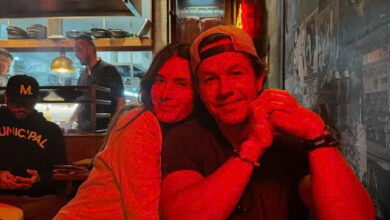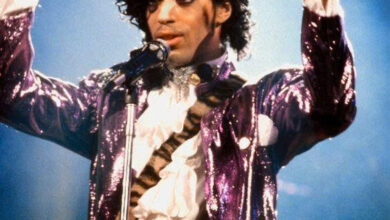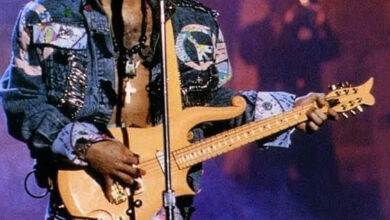Beyond the Stunts: The Art of Storytelling in Tom Cruise’s Action Films
OPINION: This article may contain commentary which reflects the author's opinion.
When most people think of Tom Cruise, the image of him hanging off a plane or leaping across buildings instantly comes to mind. With a career that spans decades, his name is synonymous with breathtaking stunts, relentless action, and jaw-dropping spectacles. However, beyond the adrenaline rush and explosive set pieces, Cruise’s action films are deeply rooted in storytelling. His commitment to the art of cinema goes far beyond the stunts, elevating each of his films with layered narratives, complex characters, and thematic depth that often goes unnoticed.
Crafting the Character Journey
In the Mission: Impossible franchise, Cruise’s portrayal of Ethan Hunt is not merely that of a fearless action hero. While his gravity-defying stunts are legendary, it’s the emotional depth of the character that keeps audiences invested. Over the course of seven films, Hunt evolves from a lone operative into a leader grappling with trust, betrayal, and sacrifice. Cruise ensures that Hunt’s vulnerability is never lost amid the action, showing a man who is not invincible but driven by loyalty to his team.
Take Mission: Impossible – Fallout as an example. The heart of the film lies not in the elaborate set pieces but in the moral dilemmas Hunt faces. He constantly questions whether the mission is worth the personal cost, adding layers of humanity to his character. Cruise’s commitment to portraying Ethan as more than just a man on a mission makes the stakes feel real, and his internal conflicts resonate as strongly as the external threats.
The Marriage of Action and Emotion
Cruise’s understanding of the balance between action and storytelling is perhaps most evident in Edge of Tomorrow. The film is packed with relentless combat and stunning effects, but what truly drives the narrative is the journey of Major William Cage, played by Cruise. Starting as a cowardly public relations officer, Cage is forced to confront his own fears, undergoing a transformation that makes the audience care about his fate. Cruise expertly weaves moments of humor, desperation, and determination into Cage’s arc, showing that the most compelling aspect of an action movie doesn’t always lie in its spectacle, but in its characters’ growth.
Furthermore, Top Gun: Maverick gives viewers an inside look at Maverick’s battle with time and legacy. Here, the action serves as a metaphor for his internal struggles. His high-flying feats become reflections of his refusal to be grounded—both literally and figuratively. Rather than solely relying on action sequences to carry the film, Cruise uses them to express Maverick’s defiance against the constraints of aging and his search for redemption.
Pushing Boundaries While Staying Grounded
One of the unique traits of Cruise’s approach to action is his insistence on performing his own stunts. While this dedication often makes headlines, it speaks volumes about his desire to immerse the audience fully into the story. By eliminating the need for visual trickery or stand-ins, Cruise ensures that viewers remain connected to the character, never breaking the illusion that what they see on screen is real. This authenticity draws people into the world he creates, heightening both the tension and emotional impact.
For example, in Mission: Impossible – Rogue Nation, the harrowing sequence where Cruise clings to the side of an airplane is more than just a thrill ride. It’s a testament to Ethan Hunt’s unwavering determination and serves to amplify the intensity of the mission. The realism of Cruise performing such stunts himself only deepens the audience’s immersion in the narrative.
The Power of Subtlety in Blockbuster Filmmaking
In a genre dominated by over-the-top effects and nonstop action, Cruise often allows quieter moments to resonate just as powerfully. In Collateral, his portrayal of Vincent, a cold-blooded hitman, reveals layers of cynicism and weariness beneath his calculated exterior. As the tension builds throughout the night, Cruise’s nuanced performance demonstrates that he can be just as captivating in a scene of dialogue as in a frenetic car chase. The film’s storytelling rests not only on the chaos Vincent creates but also on the philosophical musings about morality, fate, and human connection that unfold between the action.
A Commitment to Quality Storytelling
At the core of every Tom Cruise action film is a dedication to delivering more than just thrills. Cruise consistently collaborates with directors who prioritize storytelling, such as Christopher McQuarrie, Doug Liman, and Michael Mann. This shared vision ensures that the films’ narratives don’t get lost in spectacle but are instead driven by it. Whether it’s exploring themes of loyalty, morality, or the passage of time, Cruise’s films strike a balance between blockbuster excitement and meaningful storytelling.
His career demonstrates that action films need not sacrifice depth for thrills. For Cruise, the stunts are merely a vehicle—a way to propel the story forward, making the emotional journey as gripping as the action itself. In an industry where spectacle often overshadows substance, Cruise stands out by crafting action films that are as much about heart as they are about high-octane moments. The art of storytelling remains at the forefront of his films, ensuring that audiences are not only entertained but also moved.
In the end, what makes Tom Cruise’s action films truly remarkable is not just the edge-of-your-seat sequences but the artful storytelling that keeps us coming back for more.



